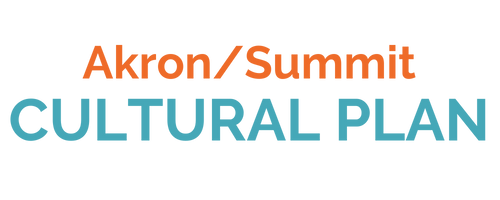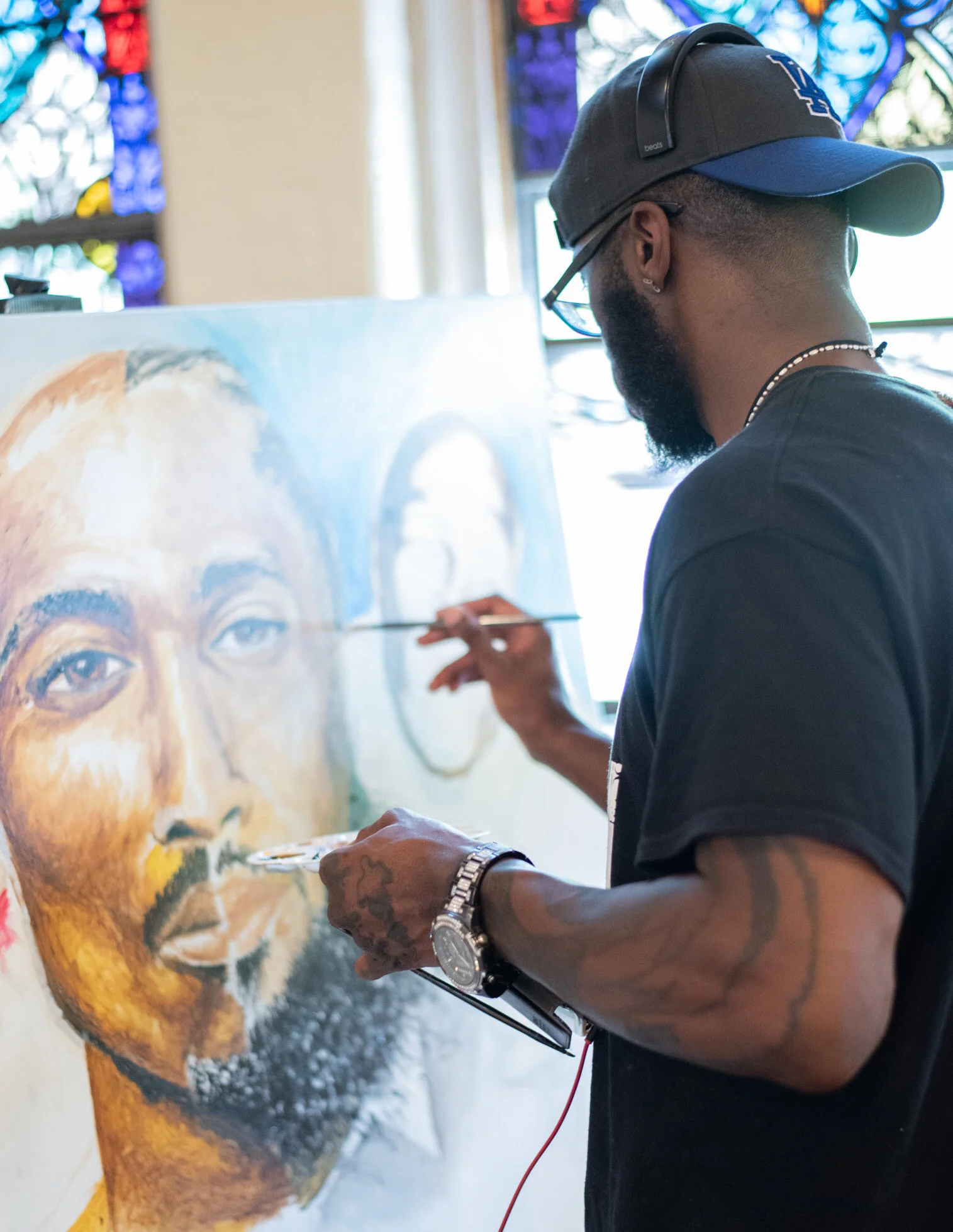Glossary of Terms
Age Friendly Akron is a five-year partnership between the City, AARP, Direction Home Akron Canton, the University of Akron, and the City’s Senior Citizens Commission to make Akron more livable for residents of all ages.
Akron Public Art Collection when used in the context of this plan means all works of art owned by the City of Akron, Ohio.
Anchor Organizations when used in the context of this plan mean the cultural organizations that are rooted in Akron by mission, invested capital, and relationships. These organizations include:
Art or artwork when used in the context of this plan means works in any permanent medium or combination of media produced by a professional practitioner in the arts. For the purposes of this division, the terms art and artwork do not include performing or literary arts such as dance, music, drama, or poetry.
Artist Selection Committee when used in the context of this plan is a group of residents appointed by the Public Art Commission to act as the decision-makers on selecting an artist or group of artists for a commission.
Arts Master Plan or Plan when used in the context of this plan means the Public Art Master Plan of the City of Akron, Ohio, as it exists or may be amended. The Arts Master Plan shall provide a process for the systematic selection of pieces of art and locations of art to be included in public spaces.
Artist when used in the context of this plan means a practitioner of the creative arts, generally recognized as such by critics and peers, with a body of work including commissions, exhibitions, sales, publications, and collections. For the purposes of this document, “artist” shall not include persons primarily working in the professional fields of architecture, engineering, design, or landscaping.
ArtsNow when used in the context of this plan means a non-profit connecting arts, culture, community events, and artists through collaboration and supporting the creative sector in Summit County, Ohio.
Commission when used in the context of this plan means the Akron Public Art Commission of the City of Akron, Ohio.
Commissioner when used in the context of this plan means the members of the Akron Public Art Commission.
City when used in the context of this plan means the City of Akron, Ohio.
Cultural Plan when used in the context of this plan means a public process in which representatives of the Akron community undertook a comprehensive community assessment and created a plan of implementation for future cultural programming.
Culture when used in the context of this plan means an umbrella term that encompasses the social behavior found in society as well as the knowledge, beliefs, arts, laws, customs, capabilities, and habits of individuals who make up society.
Cultural Inventory when used in the context of this plan means a list or database of information about cultural resources and assets.
Cultural Map when used in the context of this plan means a report on the findings and conclusions of a cultural mapping process; the cultural map can take many forms.
Cultural Mapping when used in the context of this plan means a process of collecting, recording, analyzing, and synthesizing information in order to describe the cultural resources, networks, links, and patterns of usage of a given community or group.
Cultural Sector when used in the context of this plan means a broad, complex, and evolving mix of industries that range from performing and visual art to literary art. This is a broad term that includes creative industries, and nonprofits focused on arts administration.
Creative Industries are composed of arts-centric businesses that range from nonprofit museums, symphonies, and theaters to for-profit film, architecture, and advertising companies. We have guarded against overstatement of the sector by excluding industries such as computer programming and scientific research—both creative, but not focused on the arts. (Americans for the Arts)
Deaccession when used in the context of this plan means a procedure for the withdrawal of an artwork from the Permanent Collection and the determination of its future disposition.
Equity when used in the context of this plan means the quality of being fair and impartial.
Image from and copyrighted by the Robert Woods Johnson Foundation
Entrepreneur when used in the context of this plan means a person who operates a business or businesses.
Funder when used in the context of this plan means a person or organization that provides money for a particular purpose.
Graphic Map when used in the context of this plan means a visually based, topographical map that is either drawn by an artist or generated by a computer using GIS.
GIS when used in the context of this plan means geographical information system (GIS) is a system for creating, storing, analyzing, and managing spatial data and associated attributes. GIS is a tool that allows users to create searches, analyze the spatial information and edit data.
Life Spans of Artworks when used in the context of this plan means:
Temporary: 0-2 years
Short Term: 2-10 years
Medium-Term 10- 25 years
Long-Term 25+ years
Parity when used in the context of this plan means the state or condition of being equal to the demographic makeup of the city.
Public Art when used in the context of this plan means a work of art that is visible and accessible to the public for a minimum of 40 hours per week. Public art may include sculpture, painting, installations, photography, video, works of light or sound, or any other work or project determined by the Public Art Commission to satisfy the intent of this Chapter, provided, however, that none of the following shall be considered public art for the purposes of satisfying the requirements of this Chapter:
Objects that are mass-produced of standard design, such as banners, signs, playground equipment, benches, statuary, street or sidewalk barriers, or fountains;
Reproduction, by mechanical or other means, of original works of art, except as incorporated into film, video, photography, printmaking, or other derivative works as approved by the Public Art Commission;
Decorative, architectural, or functional elements that are designed by the building architect or landscape architect as opposed to an artist commissioned for this purpose; or
Landscape architecture or gardening, except where these elements are designed by an artist and are an integral part of a work of art.
Public Art Commission when used in the context of this plan means a nine-member body that serves principally in an advisory capacity to the Office of Integrated Development.
Public Art Acquisition Fund when used in the context of this plan means funds used for the acquisition and commissioning of public art for the city of Akron. The PAAF is a separate, special fund as part of the City’s overall finances into which public art donations and funding are deposited, transferred, and used for acquisition, commissioning, exhibition, and conservation of public art as recommended by the Public Art Commission and approved by the Mayor.
Public Art Program when used in the context of this plan means the Public Art Program of the City of Akron, Ohio continued by this division.
Public Art Annual Work Plan when used in the context of this plan means the annual work plan developed by the Public Art Commission with staff, detailing the public art projects and funding levels recommended for the upcoming year. The public art annual work plan shall be submitted to City Council for approval as part of the annual budget.
Public Space when used in the context of this plan means any area or property (public or private) which is accessible or visible to the general public a minimum of 8 hours per business day.
Publicly Owned Land when used in the context of this plan means any land open to the public and managed by the City of Akron, Ohio.
Relocation when used in the context of this plan means a procedure for the movement of an artwork from one location to another.
Resources and Assets in this context, the various elements that contribute to culture, whether human, natural, social, economic or bricks and mortar.
Request for Qualifications, when used in the context of this plan, means a pre-qualification state of a procurement process. Requests for Qualifications do not require a proposal.
Request for Proposals when used in the context of this plan means a document that solicits proposals for procurement. This process is usually completed after a Request for Qualifications.
Steering Committee when used in the context of this plan means a group of Akron residents that determined the priorities of the Akron Cultural Plan and provided context to the Akron community for the planning team.


